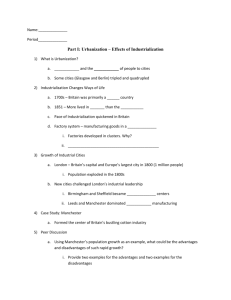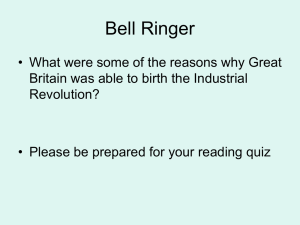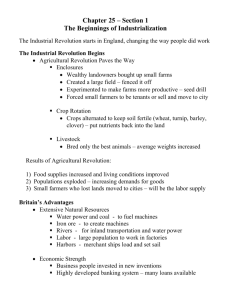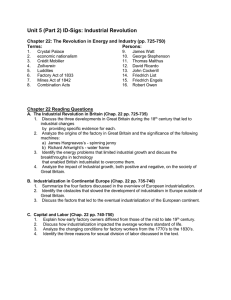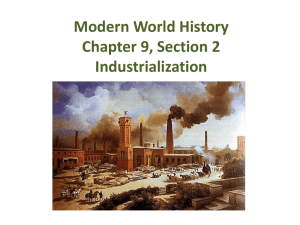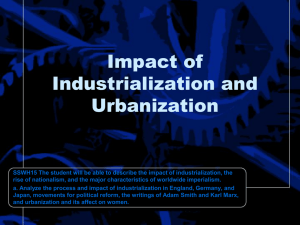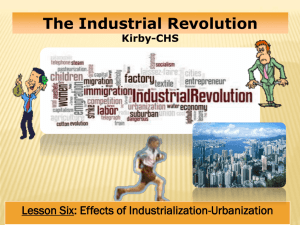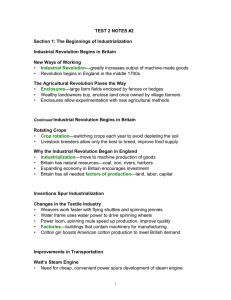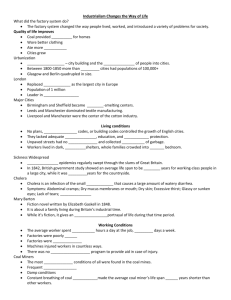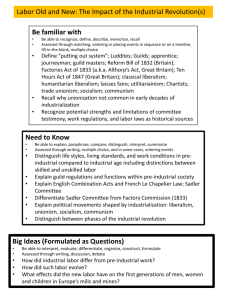Case Study: Manchester
advertisement
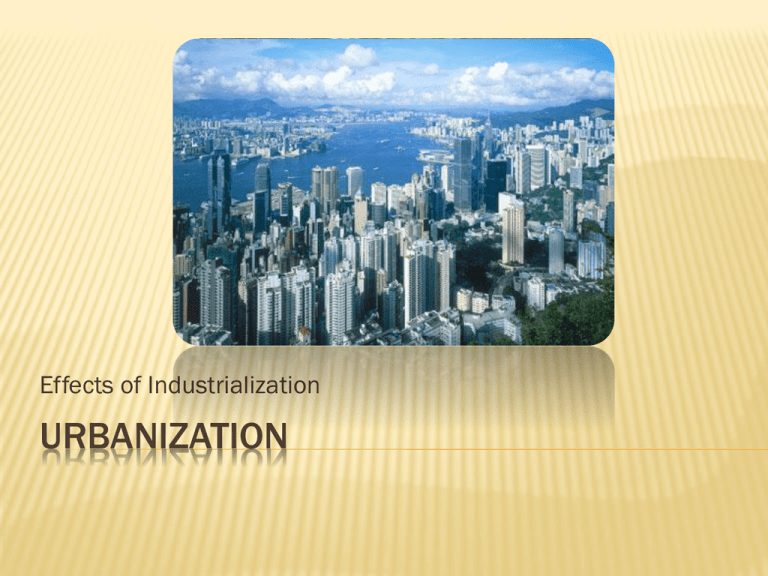
Effects of Industrialization URBANIZATION WHAT IS URBANIZATION? City building and the movement of people to cities Some cities (Glasgow and Berlin) tripled and quadrupled INDUSTRIALIZATION CHANGES WAYS OF LIFE 1700s – Britain was primarily a rural country 1851 – More lived in cities than the countryside Pace of Industrialization quickened in Britain Factory system – manufacturing goods in a central location Factories developed in clusters. Why? Entrepreneurs built them near sources of energy GROWTH OF INDUSTRIAL CITIES London – Britain’s capital and Europe’s largest city in 1800 (1 million people) Population exploded in the 1800s New cities challenged London’s industrial leadership Birmingham and Sheffield became iron-smelting centers Leeds and Manchester dominated textile manufacturing CASE STUDY: MANCHESTER Formed the center of Britain’s bustling cotton industry POPULATION GROWTH Manchester's Population Growth 500,000 450,000 400,000 350,000 300,000 250,000 200,000 150,000 100,000 50,000 0 1750 1801 1831 1871 PEER DISCUSSION Using Manchester’s population growth as an example, what could be the advantages and disadvantages of such rapid growth? Provide two examples for the advantages and two examples for the disadvantages Describe Manchester in relation to one of the 5 themes of Geography LIVING CONDITIONS No sanitary codes or building controls Lack of adequate housing, education, and police protection Lack of running water and indoor plumbing Frequent epidemics sweeping through slums Ex. Cholera Eventually, better housing, healthier diets, and cheaper clothing WORKING CONDITIONS Created new jobs for workers Workers trying to keep pace with machines Factories dirty and unsanitary Workers running dangerous machines for long hours Harsh, severe factory discipline Eventually, higher wages, shorter hours, and better working conditions CLASS TENSIONS Not everyone in the new cities lived miserably A new class emerged – the middle class A social class of skilled workers, professionals, businesspeople, and wealthy farmers Upper class of landowners and aristocrats resentful of rich middle class Lower middle class of factory overseers and skilled workers Workers overworked and underpaid SOCIAL CLASSES Upper Class Upper Middle Class Lower Middle Class Working Class Do these social classes still exist today? In what ways? CURRENT EVENTS: CHINA’S POPULATION PROBLEMS http://www.youtube.com/watch?v=-W3l1VE2hw POLITICAL CARTOONS - ASSIGNMENT You are a cartoonist the a London newspaper during the Industrial Revolution and feel troubled by the different problems that are happening as a result of this “revolution.” Your newspaper editor has asked you to create a political cartoon (cartoons that convey a message in humorous and/or thoughtprovoking ways) that highlights a condition or problem associated with the Industrial Revolution in Great Britain. Some problems you may choose to illustrate are: the pollution of the air, the hierarchy of social classes, the dangerous conditions in the factories, and the crowded living conditions. Remember: Cartoons should combine both drawings and text POLITICAL CARTOONS
